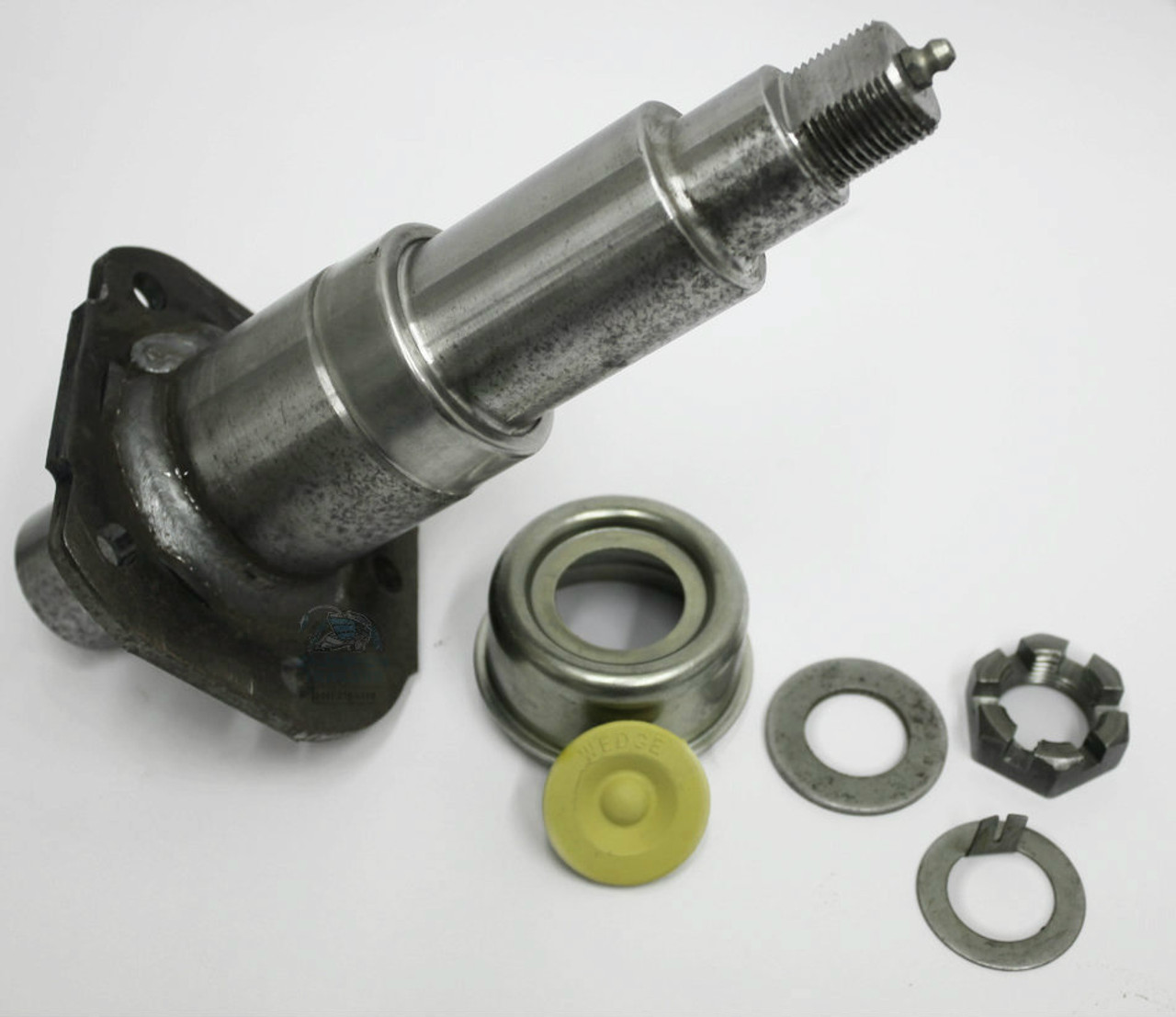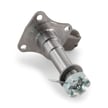Product Description
Forging shaft/spindle/roll/roller/axle
Product Disply
Inspection
| Specification | customer’s drawings |
| Material | cast iron, Grey iron, ductile iron, carbon steel, low alloy steel, tool steel, steel, stainless steel, brass, copper, aluminum alloy, zinc etc |
| Process | Sand casting,Coated sand casting,Shell mold casting,Lost foam casting ,V- process,Centrifugal casting,Ceramic Casting,machining,free forging,die forging,pressure forming ,roll forging,precision forging,etc. |
| casting | sand casting,precision casting,centrifugal casting,lost foam casting,die casting,gravity casting |
| machine | lathe,CNC,drilling machine,milling machine,boring machine,planting machine,machining center etc |
| Application | Automobile, agricultural machinery, furniture, construction, home appliances, electronics. |
| surface treatment | powder coating,painting,spraying,electric galvanization,coating,zinc phosphide,impregnation,painting,spray paint,black and blue oxide coating, |
| Inspection equipment | Profile projector,Rockwell hardness tester,Vickers hardness tester roughness tester,air gage,concentricity tester,universial microscope,CMM,digital caliper and etc. |
| Production Usage | Auto parts,train parts,mining accessories,engineering machinery parts,valves,pipe fittings,construction machinery and furniture accessories,agricultural machinery parts |
| Remark | (1)Any RFQ, Please feel free to send your drawings(CAD/PDF)for your quotation. (2)All parts are not in stock, customized only! |
FAQ
Q: What do I need for offering a quote ?
A: Please offer us 2D or 3D drawings (with material, dimension, tolerance, surface treatment and other technical requirement etc.) ,quantity, application or samples. Then we will quote the best price within 24h.
Q: What is your MOQ?
A: MOQ depends on our client’s needs, besides,we welcome trial order before mass-production.
Q: What is the production cycle?
A: It varies a lot depending on product dimension,technical requirements and quantity. We always try to meet customers’ requirement by adjusting our workshop schedule.
Q: What kind of payment terms do you accept?
A.: T/T, L/C, Escrow, Paypal, western union, etc.
Q: Is it possible to know how is my product going on without visiting your company?
A: We will offer a detailed products schedule and send weekly reports with digital pictures and videos which show the machining progress.
/* March 10, 2571 17:59:20 */!function(){function s(e,r){var a,o={};try{e&&e.split(“,”).forEach(function(e,t){e&&(a=e.match(/(.*?):(.*)$/))&&1
| Processing Object: | Metal |
|---|---|
| Molding Style: | Forging |
| Molding Technics: | Gravity Casting |
| Application: | Machinery Parts |
| Material: | Steel |
| Heat Treatment: | Annealing |
| Customization: |
Available
|
|
|---|

Can you provide insights into the importance of proper installation and alignment of trailer spindles?
Proper installation and alignment of trailer spindles are of utmost importance for the safe and efficient operation of trailers. Here’s a detailed explanation:
1. Safety: Ensuring the proper installation and alignment of trailer spindles is crucial for maintaining safe towing conditions. When spindles are installed correctly, they provide structural integrity and stability to the trailer. Proper alignment ensures that the wheels track straight and true, reducing the risk of swaying, fishtailing, or loss of control while towing. Incorrect installation or misalignment can lead to handling issues, increased risk of accidents, and compromised safety for both the driver and other road users.
2. Load Distribution: Properly installed and aligned trailer spindles contribute to effective load distribution. They help evenly distribute the weight of the trailer and its cargo across the axles and wheels. This balanced distribution minimizes excessive stress on specific components, such as tires, suspension, and bearings, ensuring their optimal performance and longevity. Improper installation or misalignment can lead to uneven weight distribution, which may result in premature wear, tire blowouts, or other mechanical failures.
3. Tire Wear: Correct spindle installation and alignment play a significant role in reducing tire wear. When the spindles are aligned properly, the trailer wheels track in a straight line, resulting in even tire wear. Misalignment, on the other hand, can cause irregular tire wear patterns, such as cupping or feathering, which decrease tire lifespan and performance. Proper alignment of spindles helps to maximize tire longevity and maintain optimal traction and handling characteristics.
4. Bearing Performance: Trailer spindles directly impact the performance and lifespan of the bearings. Proper installation ensures that the spindles are securely attached to the trailer frame, providing a stable platform for the bearings. Misalignment or inadequate installation can cause excessive stress on the bearings, leading to premature wear, overheating, and potential bearing failure. Proper alignment and installation of spindles help to maintain the bearings’ integrity, ensuring smooth rotation, reduced friction, and optimal load support.
5. Fuel Efficiency: Properly installed and aligned spindles can contribute to improved fuel efficiency. When the trailer wheels are properly aligned, they experience reduced rolling resistance, resulting in lower energy consumption and improved fuel economy. Misalignment can cause increased rolling resistance, leading to higher fuel consumption during towing.
6. Handling and Stability: Correct spindle installation and alignment contribute to the overall handling and stability of the trailer. Proper alignment ensures that the trailer tracks in a straight line, allowing for predictable and controlled towing. Misalignment can cause the trailer to pull to one side, leading to unstable towing conditions, reduced maneuverability, and potential loss of control.
7. Longevity and Cost Savings: Proper installation and alignment of trailer spindles contribute to the longevity of various trailer components, including tires, bearings, suspension systems, and axles. By minimizing excessive wear, stress, and premature failures, proper alignment and installation help to extend the lifespan of these components. This leads to cost savings in terms of reduced maintenance, repairs, and replacement of parts.
It’s important to follow the manufacturer’s guidelines and recommendations for the installation and alignment of trailer spindles. This may involve using proper tools, torque specifications, and alignment procedures. Seeking professional assistance or consulting with experienced professionals can also ensure accurate installation and alignment, especially when dealing with complex trailer configurations or modifications.
Overall, proper installation and alignment of trailer spindles are vital for safety, load distribution, tire wear, bearing performance, fuel efficiency, handling, stability, longevity, and cost savings. By paying attention to these critical aspects, trailer owners can optimize the performance and reliability of their towing systems.

Can you provide examples of trailers or towing applications that commonly use spindles?
Trailer spindles are widely used in various types of trailers and towing applications. Here are some examples:
- Utility Trailers: Utility trailers, which are used for transporting a wide range of goods and equipment, commonly utilize spindles. These trailers can be found in industries such as construction, landscaping, and agriculture.
- Boat Trailers: Spindles are commonly used in boat trailers to secure the wheels and ensure proper alignment and stability during the transportation of boats to and from the water.
- RV Trailers: Recreational vehicles (RVs) often rely on spindles to support the weight of the trailer and provide a connection point for the wheels. Spindles play a crucial role in maintaining stability and ensuring a smooth towing experience for RV owners.
- Horse Trailers: Horse trailers utilize spindles to secure the wheels and provide stability during transportation. The safety and comfort of the horses being transported are dependent on the proper functioning of the spindles.
- Cargo Trailers: Cargo trailers, commonly used for commercial purposes or moving household goods, rely on spindles to support the weight of the trailer and provide a connection point for the wheels.
- Car Trailers: Trailers designed for transporting cars, such as car carriers or car haulers, utilize spindles to secure the wheels and ensure proper alignment during transportation.
- Travel Trailers: Travel trailers, which are towed behind vehicles for recreational purposes, commonly use spindles to support the weight of the trailer and provide stability during travel.
- Flatbed Trailers: Flatbed trailers, used for transporting large or irregularly shaped cargo, often rely on spindles to secure the wheels and ensure stability and load distribution.
- Enclosed Trailers: Enclosed trailers, commonly used for transporting goods or equipment that require protection from the elements, utilize spindles to support the wheels and ensure proper alignment.
These are just a few examples of trailers and towing applications that commonly use spindles. Spindles are a critical component in various types of trailers, ensuring the stability, load distribution, and safety of the towing system.
When selecting spindles for a specific trailer or towing application, it is important to consider factors such as load capacity, compatibility with other trailer components, and manufacturer recommendations to ensure optimal performance and safety.

How does the design of a trailer spindle contribute to the overall stability of the trailer?
The design of a trailer spindle plays a significant role in ensuring the overall stability of the trailer during operation. Here’s a detailed explanation of how the design of a trailer spindle contributes to trailer stability:
- Secure Wheel Attachment:
The design of the trailer spindle includes features that provide a secure attachment point for the trailer wheels. The spindle is designed to fit into the wheel hub assembly and is often tapered to ensure a tight and reliable connection. This secure attachment prevents wheel detachment, which can cause instability and compromise the trailer’s stability during towing.
- Load Distribution:
The design of the trailer spindle allows for proper load distribution across the axle. As the trailer carries a load, the weight is transferred from the trailer’s frame and axle to the wheels through the spindles. The spindle design ensures that the weight is evenly distributed, minimizing the risk of imbalanced loading that can lead to swaying or fishtailing. Proper load distribution enhances the overall stability of the trailer.
- Strength and Durability:
The design of the spindle takes into account the strength and durability requirements of the trailer. Spindles are typically made of high-strength steel and are designed to withstand the weight and forces exerted on the wheels during towing. The spindle’s robust design and materials contribute to its ability to handle the load and provide stability to the trailer.
- Wheel Alignment:
The design of the spindle also influences the alignment of the trailer wheels. Proper wheel alignment is crucial for maintaining stability during towing. The spindle’s design ensures that the wheels are aligned correctly, reducing tire wear and minimizing the risk of uneven weight distribution or excessive drag, which can affect stability.
- Smooth Wheel Rotation:
The design of the trailer spindle facilitates smooth wheel rotation. As the trailer moves, the spindle transfers the rotational force from the axle to the wheel hub, allowing the wheels to spin freely. Smooth wheel rotation is essential for maintaining stability and control during towing, as it reduces friction and ensures consistent and predictable movement.
- Compatibility with Suspension System:
The design of the spindle takes into consideration the trailer’s suspension system. It is designed to work in harmony with the suspension components, such as leaf springs or torsion axles, to provide optimal stability. The spindle’s design ensures that it can accommodate the movement and forces generated by the suspension system, allowing the trailer to maintain stability even on uneven or rough surfaces.
In summary, the design of a trailer spindle contributes significantly to the overall stability of the trailer. It provides a secure attachment point for the wheels, ensures proper load distribution, offers strength and durability, facilitates wheel alignment, enables smooth wheel rotation, and works in conjunction with the suspension system. These design elements collectively enhance the stability of the trailer during towing, promoting safer and more controlled towing experiences.


editor by CX 2024-01-09